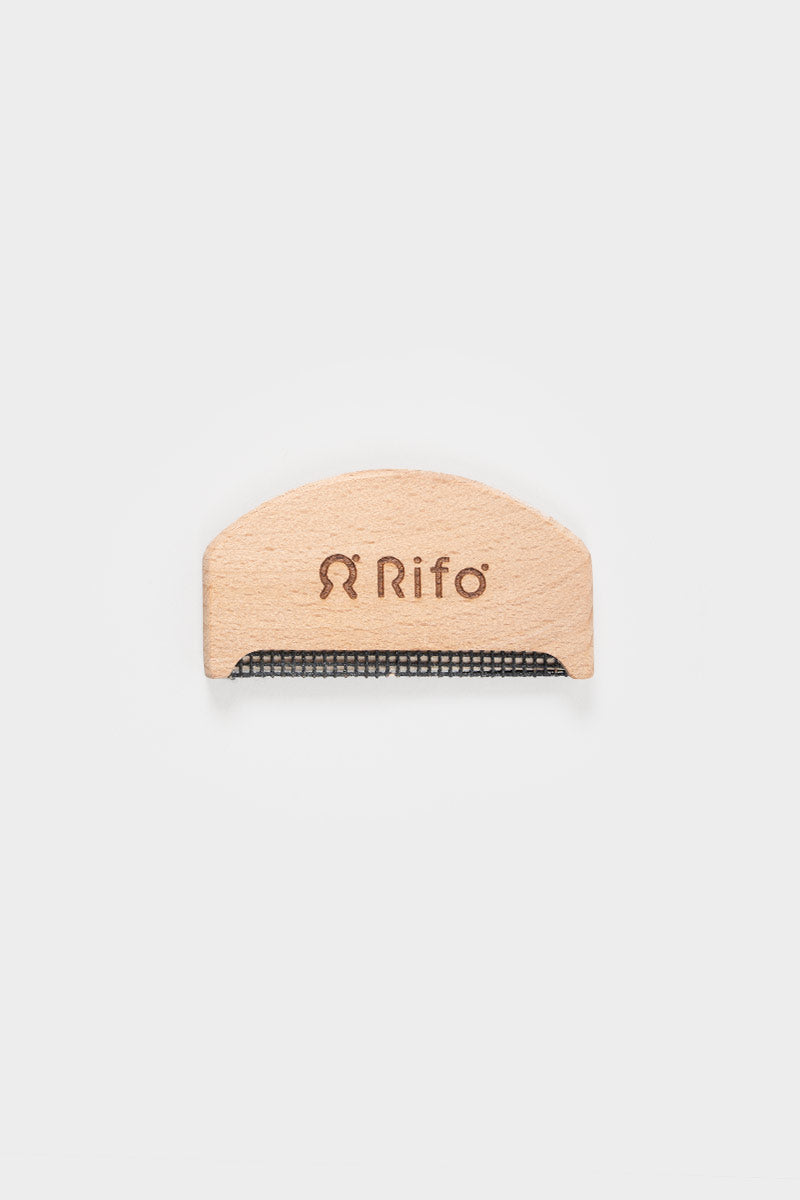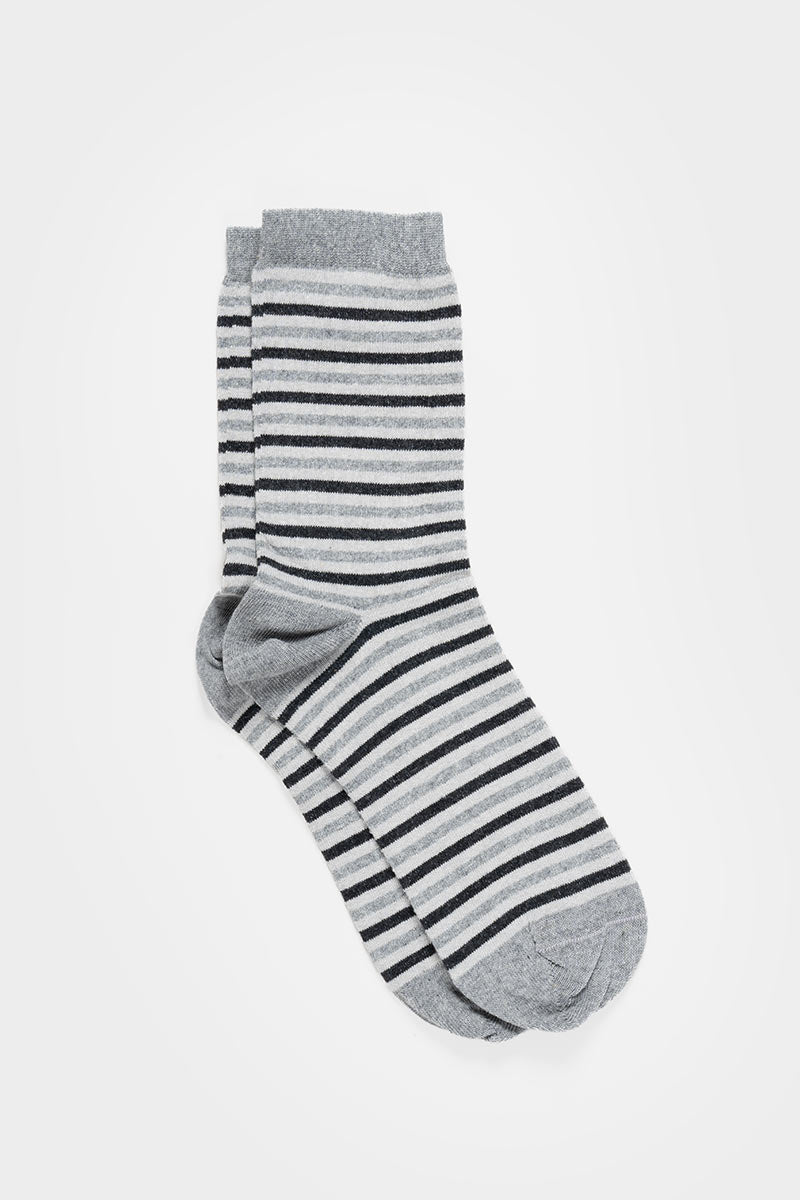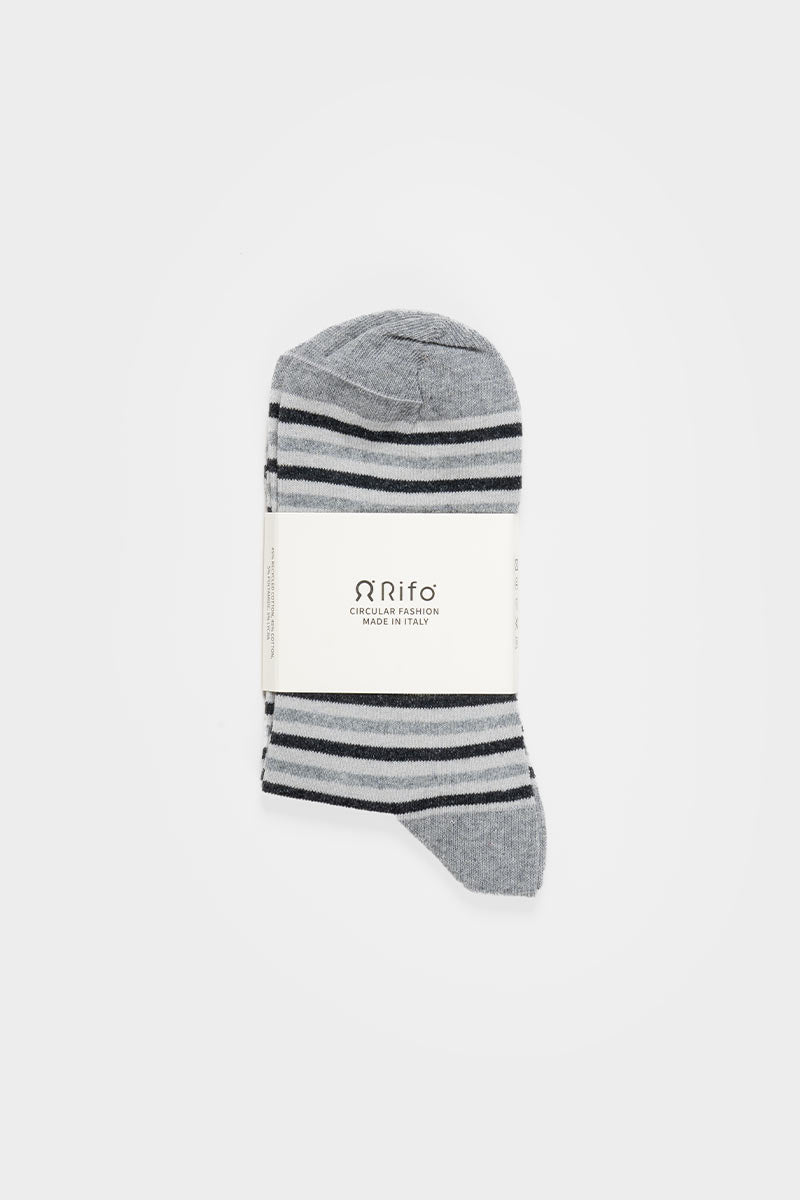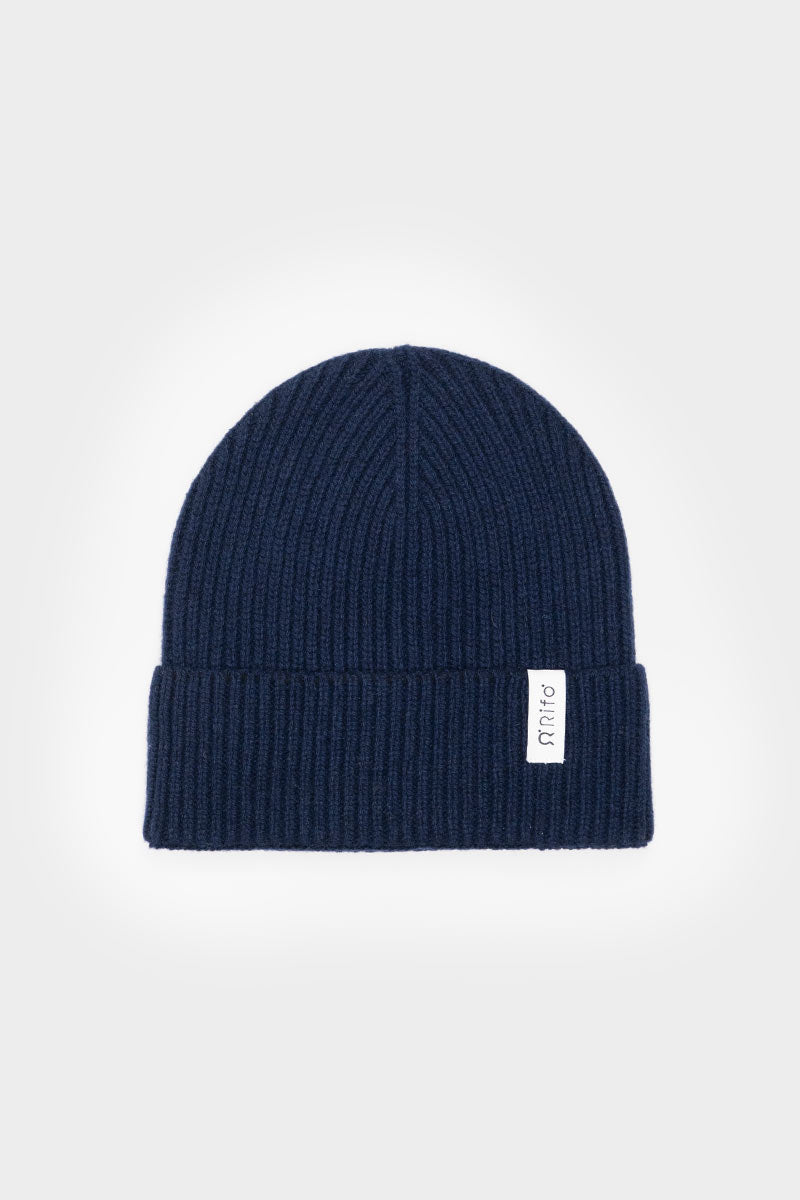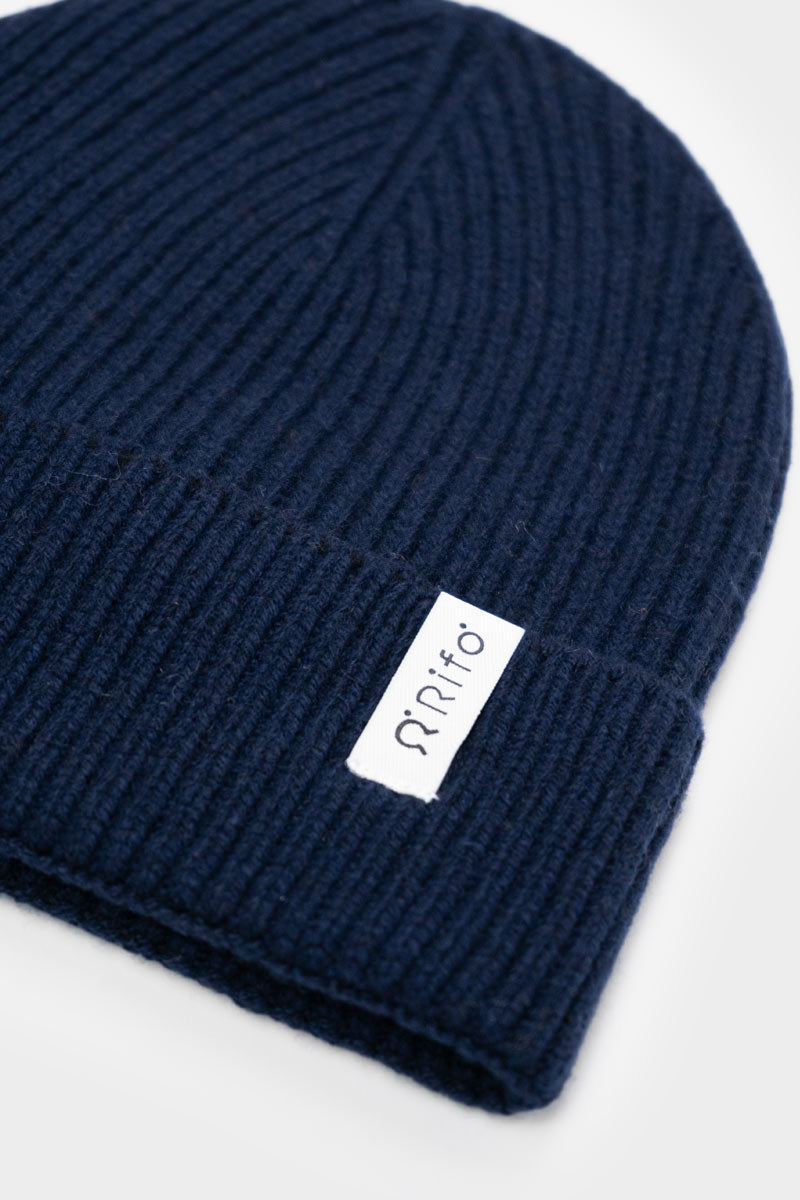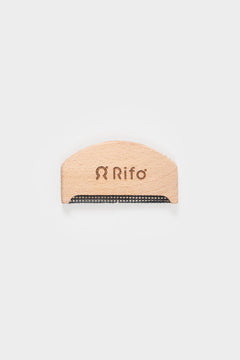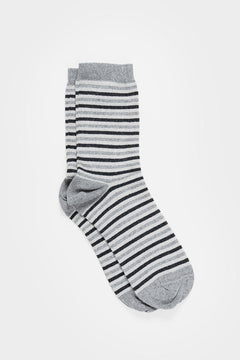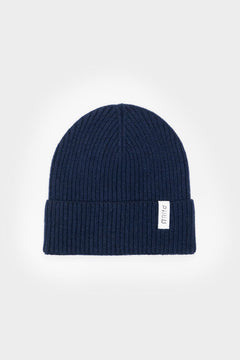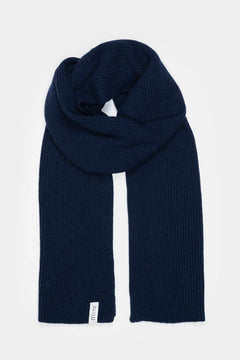Rifò uses for its winter collection a yarn composed of 95% recycled cashmere and 5% virgin merino wool certified RWS (Responsible Wool Standard) , which gives strength to the fibers.
When we read the term mulesing free in the description of the certification of our yarn, we wanted to learn more about what exactly this sheep breeding and shearing technique meant.
We knew that mulesing had to do in general with a suffering for the animal, considered not as a living being, but more as an object, a resource, made just to get the greatest amount of wool as quickly as possible. Even at the cost of injuring the animal during shearing.
However, we did not imagine that it was a breeding technique consolidated in the 1930s in Australia which involves the removal of the tail and a part of anal and perianal flesh in particular from the Merinos breed sheep .
Why? In order to prevent the spread of infections in the back of the animal, constantly exposed to excrements and humid substances that create the ideal habitat for the attacks of flies, which deposit their eggs there. In addition to bringing suffering to the animal, these infections, force farmers to discard a large amount of wool, with repercussions on their income.
What is Mulesing
The Museling technique was therefore born in 1929 in Australia, the main producer of Merino wool, and bears the name of its inventor, John WH Mules. After having seeing the spreading of the myasis infection, parasitosis caused by the diptera larva, he first tested this drastic technique.

How does it work? To solve this problem and prevent diseases, the sheep are directly removed part of the posterior flesh , very often including the tail, often without any type of anesthesia.
The purpose is to ensure that the new skin is smoother and that there are no folds and crevices where infections can settle.
The characteristic of the Merinos sheep is in fact a wrinkled skin, which allows the production of a lot of wool and at the same time allows the stagnation of urine and wet substances, making this point the perfect habitat for flies to lay their eggs, especially in the warmer season.
Myiasis infections can lead sheeps to death, as well as the trauma of mulesing . In fact, this generates significant blood losses linked to wounds, which often become infected, among other things, returning point and again.
It seems obvious that for such a widespread and massively reared breed of sheep, the purpose of this technique is not really to save the life of the animals, but more to produce as much wool as possible. If the animal survives the trauma of mulesing, a and abundant clean wool production will be ensured throughout its life.
Is mulesing legal?
Faced with this impressive phenomenon, the first question is: "but is mulesing really legal?"
The answer is yes, but not in all countries. Unfortunately it is in Australia , where according to the PETA association, People for Ethical treatment of animals , there is the 25% of world Merinos wool production.
According to Wikipedia in Australia this technique is still accepted and judged by the Australian Association of Veterinarians as a "not ideal solution, but a necessary compromise between a painful operation on the spot for the animal, with long-term benefits. on his well-being ".
Obviously the mulesign generates discussion and controversy among the Australian public opinion. In particular, the Australian politician Mark Pearson, of the Animal Justice Party , carries on a battle to highlight the brutality of this practice and to make the anesthesia mandatory before the mutilation of the animals.

In New Zelanda, instead, where this technique was very common not very log ago, mulesing was forbidden, after pressures from animal rights associations.
Among the other areas of the world where Merino sheep are massively bred we find South Africa and South America in general. In these cases, however, the activity of mulesing seems to be much less widespread.
In particular we found a official declaration from the National Association of Wool Producers in South Africa where they say that mulesing is blamed and that 90% of farmers declare themselves to be mulesing-free.
As for South America , on the other hand, it seems that the harsh climate does not lead to obvious risks of infection in the back of the animals, which does not make mulesing so widespread.
Alternatives Mulesign free to contrast infections in the sheeps
To encourage the proliferation of larvae and infections in the animal risk areas, it seems to be in fact in large part the hot and humid climate of Australia, unsuitable for the breeding of Merinos sheep.
This breed has been selected over time precisely to have skin that is as wrinkled, abundant and therefore with a very rich mantle.
If we combine the warm climate of Australia with an unnatural overload of fur, it is evident that the suffering linked to infections is caused precisely by the action of man and by intensive and blind breeding.
For this reason mulesing today could be avoided, through a slower and more accurate breeding, less oriented to the quantity but to the quality of the product.
Among the main viable solutions to avoid the mulesing technique we can find:
- cleaning and control of animals by spraying, together with shearing of the parts at risk
- fly traps to be installed around flocks
- breeding and selection of breeds with a lower growth of wool, therefore more suitable for the warm climates of Australia
Rifò mulesing free yarn
As anticipated, the yarn used by Rifò is certified Mulesing free, since the 5% virgin wool which is combined with 95% regenerated cashmere is certified Responsible Wool Standard, whose details say:
"On farms, the certification ensures that sheep are treated with respect to their Five Freedoms1 (1 The Five Freedoms are internationally recognized standards for the protection of animal welfare, consisting of: 1. Freedom from hunger or thirst; 2. Freedom from discomfort; 3. Freedom from pain, injury or disease; 4. Freedom to express (most) normal behavior; 5. Freedom from fear and distress. (Source: Farm Animal Welfare Council)) and also ensures best practices in the management and protection of the land. The standard is globally applicable to all breeds of sheep, and mulesing is strictly prohibited."
The RWS certification is a tool that allows brands to be able to affirm with certainty how the animals have been treated to produce wool, also verifying how the entire production process of the raw material does not risk affecting the work of virtuous breeders.

We already spoke about vegan wool in the past. In fact, we think that Rifò sweaters can represent a vegan alternative for those who have chosen cruelty-free , as they are produced through the recycling of raw materials and not through its direct exploitation.
We are very happy to declare that even 5% of the wool in our sweaters was produced through a process for which no animals were harmed .
If you want to know an alternative of wool mulesing free and vegan sweaters and clothing, visit our website discover Rifò's sustainable sweaters .
